Ever since automation became mainstream, the concern around people losing jobs has grown louder. With good reason. Globally, several functions are expected to be automated - including 20 million manufacturing jobs, 39% in the legal sector and 95% of an organization’s finance functions. McKinsey predicts that 400 to 800 million people’s jobs worldwide will be displaced by automation by 2030.
However, we believe that the concern is misplaced. While automation would cause workers to lose their existing jobs, it offers a significant opportunity for them to be remolded for different kinds of jobs. Just like the three industrial revolutions of the past. For instance, in the 1900s, the world witnessed a significant job displacement in the agricultural sector, but an exponentially greater number of new jobs were created in the manufacturing and service sectors.
We believe that a similar shift is underway today as more jobs are automated. BCG estimates that for every six jobs being automated, one additional job is needed to implement and maintain this technology. In addition, the World Economic Forum's Future of Jobs Report 2020 estimates that 95 million new jobs will be created by 2025.
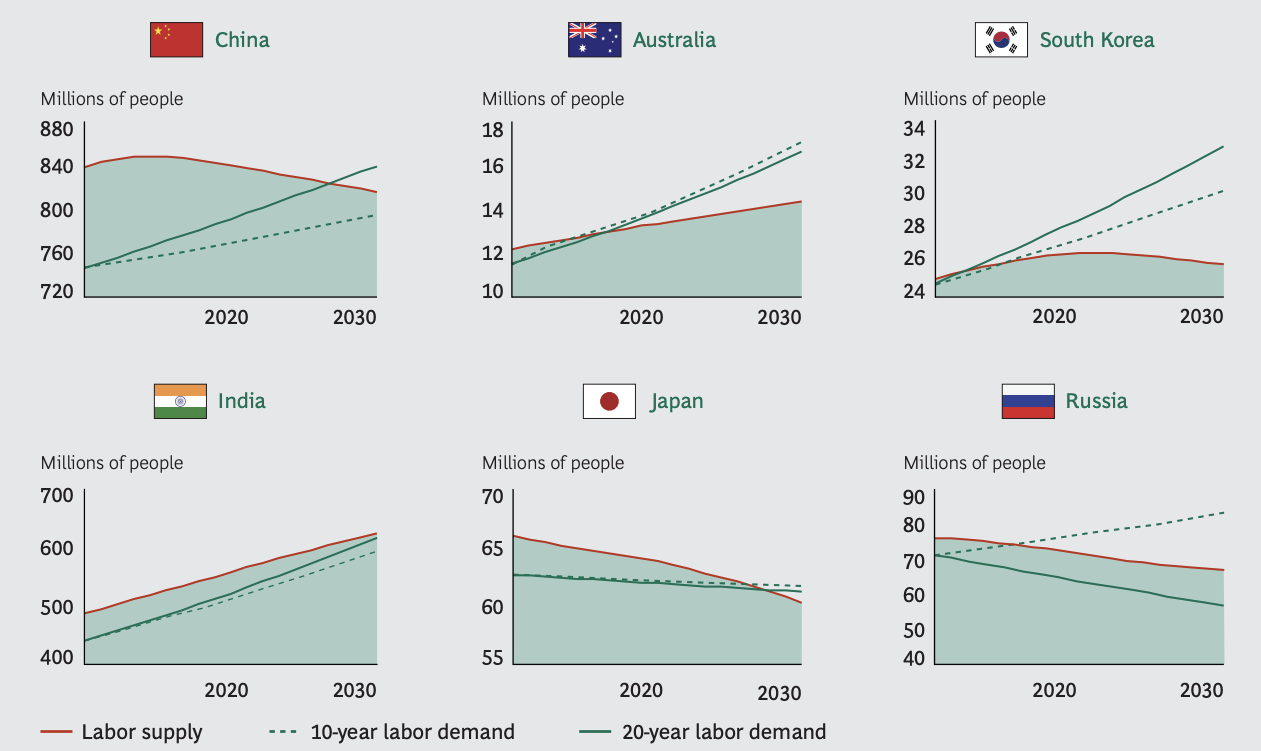

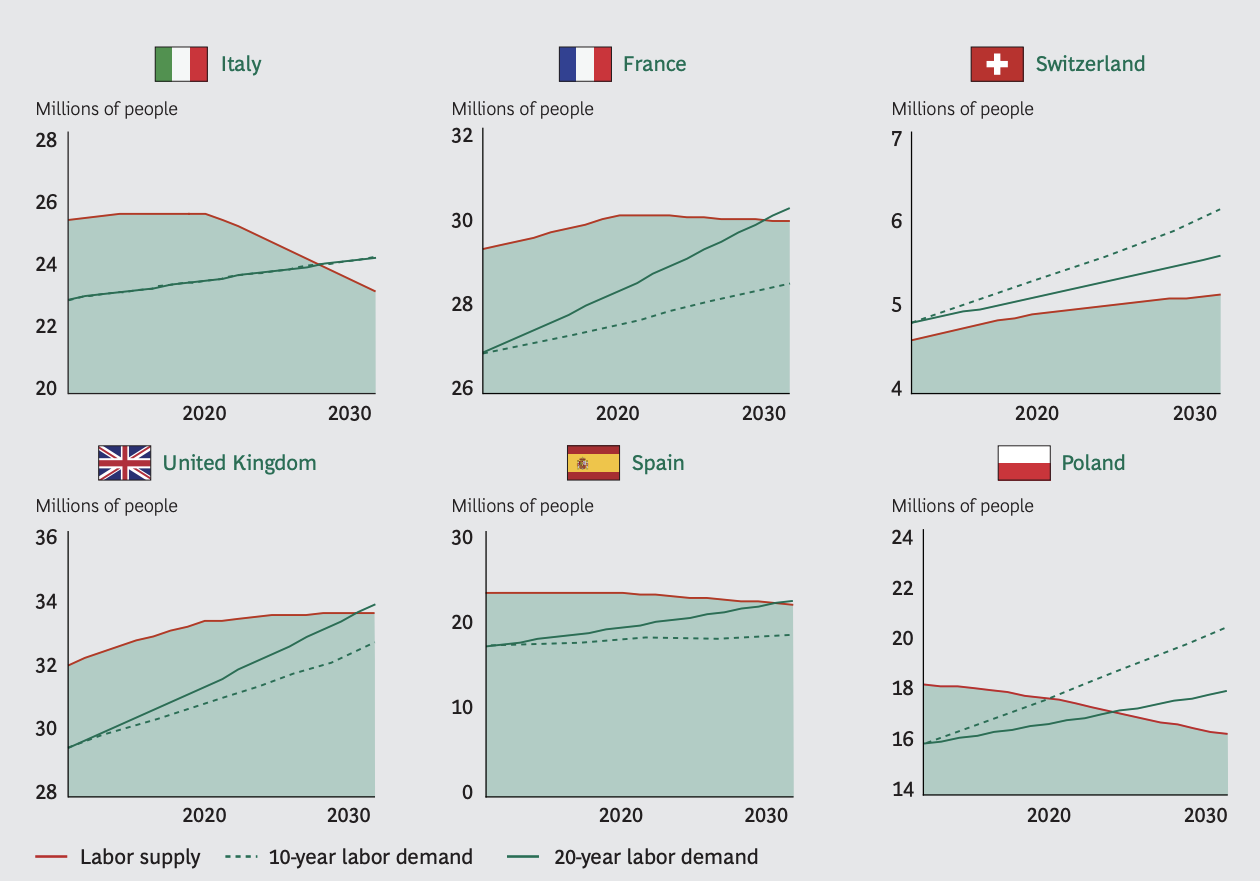

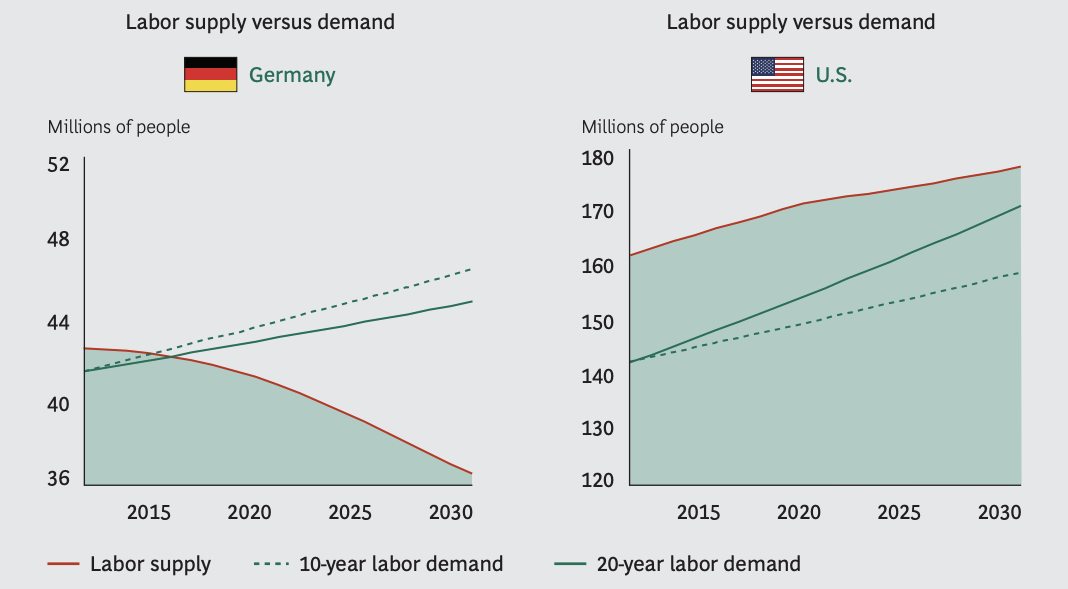

It is not just the nature of jobs that are changing. By 2030, most of the world’s economies will face an ageing population and global shrinking of the workforce. As you can see from the graph above, most countries will not meet the increasing labor demand of the next two decades. However, a few countries like India are exceptions. In this article, we explore what this means for the Indian labor force and what organizational leaders can do to nurture them.
India has a steady growth in the working-age population. As per UNICEF, the subcontinent will have one of the youngest labor forces in the world until 2040. This means India needs to create 90 million jobs by 2030 at an expected growth rate of 8-9%. However, it’s not as simple as that.
The demographic composition of the Indian workforce might pose unique challenges. Unlike the western labor markets, which grew on the back of the manufacturing sector, India employment is mainly driven by the agriculture and non-financial service sector.
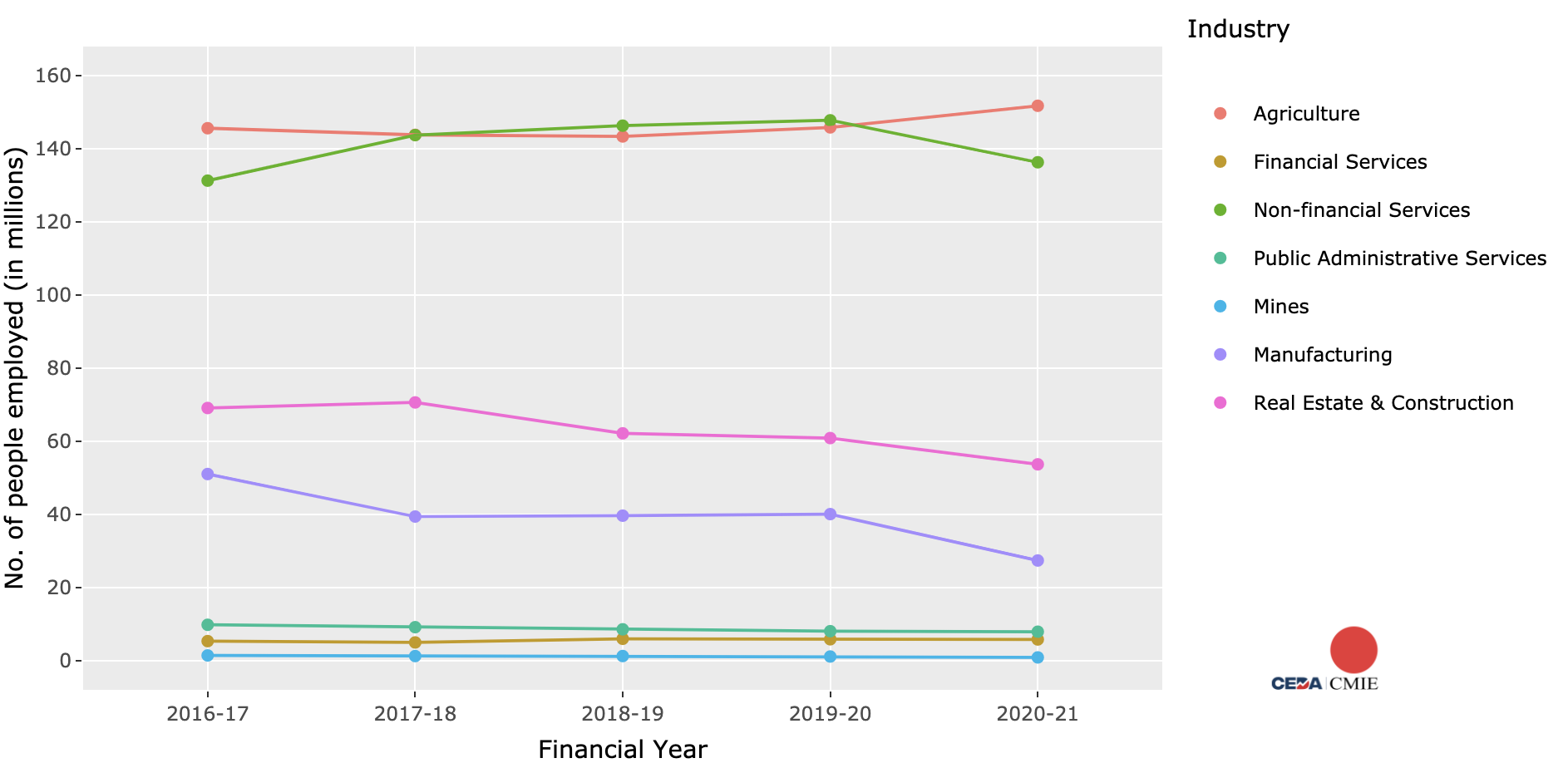

Source: CEDA-CMIE Bulletin
As per the latest employment time series from CEDA, 99% of Indian workforce is employed in the seven sectors. Of these, Agriculture employed the largest proportion at 40% of all workforce, followed by non-financial services, real estate and construction, and manufacturing. This means that although the workforce might be large, they might not be skilled to take up the high-technology jobs of the future.
India will have a skills deficit of 29 million by 2030. In fact, we already see the impact of this. 53% of Indian businesses could not recruit in 2019. If this trend continues, most industries will be plagued by about a 75-80% skill gap. And only 20-25% of the workforce will be employable.
The best time to have reversed this trend is yesterday. The next best time is now.
What can companies do?
Invest in strategic initiatives to reskill their existing and new employees for the jobs of the future.
Begin at the leadership level
We believe that organizations need to create a formal leadership role of the Chief Reskilling Officer (CRO) to conceptualize and execute reskilling initiatives. Traditionally, companies have treated skills development as a part of learning and development (L&D) programs tucked under the HR gambit. Such programs exist more like insurance, generating peace of mind by knowing these resources are available. This approach won’t do for the jobs of the future.
The CRO would take on both advocacy and execution roles, demonstrating the strategic value of reskilling in the organization’s roadmap. They will need to closely align with the organization’s business goals and identify opportunities for the future and reskill employees to leverage them. They must also define new capabilities and competencies, along with the performance standards and outputs.
Here are a few key points to consider for introducing a role like this in your organization:
Invest thoughtfully
Just like employees move between projects or assignments, in the future, they will transition from one skill to another across the reskilling journey. As this happens, the complexity of design and execution challenges will grow. Organizations need to adequately fund their reskilling programs for a long-term capability development strategy and roadmap – led by the aforementioned CRO.
Set realistic goals
As simple as it sounds, reskilling 70-80% of an organization’s workforce is a gargantuan endeavour. Given the entrenched attitudes and styles of leadership, deep-rooted policies and practices, the Chief Reskilling Officer has a steep mountain to climb. Their goal is not to provide narrow-focused training on specific technologies but to build an adaptive workforce. This requires an organizational change across mindset, culture and attitudes.
So, be realistic about results and timelines.
Build sustainable learning systems
The execution of the reskilling program is bound to be chaotic. To find order in this chaos and achieve outcomes, the CRO must:
Conduct a thorough skills inventory. Leverage AI-based tools to assess the skills of each employee and their needs for the future
Create bespoke plans for their workforce based on the skills inventory
Engage external partners to optimize learning outcomes
Create the right delivery methodologies, including classroom training, online courses, workshops, self-learning, etc.
Strengthen retention programs to get the most out of newly reskilled employees
Rewire your organization for the reskilled employee
Reskilling can’t be treated as an educational initiative outside the confines of the job. It needs to align with the work that employees are doing. It must include on-the-job training, coaching and job rotation. Teams must receive regular review and feedback, not only from their superiors but also from one another.
India’s current labor situation might appear like a case of ‘water water everywhere, not a drop to drink’ — with burgeoning unemployment on the one hand and a growing job market on the other. However, we believe this can be a significant opportunity for organizations. A strategic reskilling initiative designed with foresight can help leaders build differentiation and competitive advantage before it’s too late.
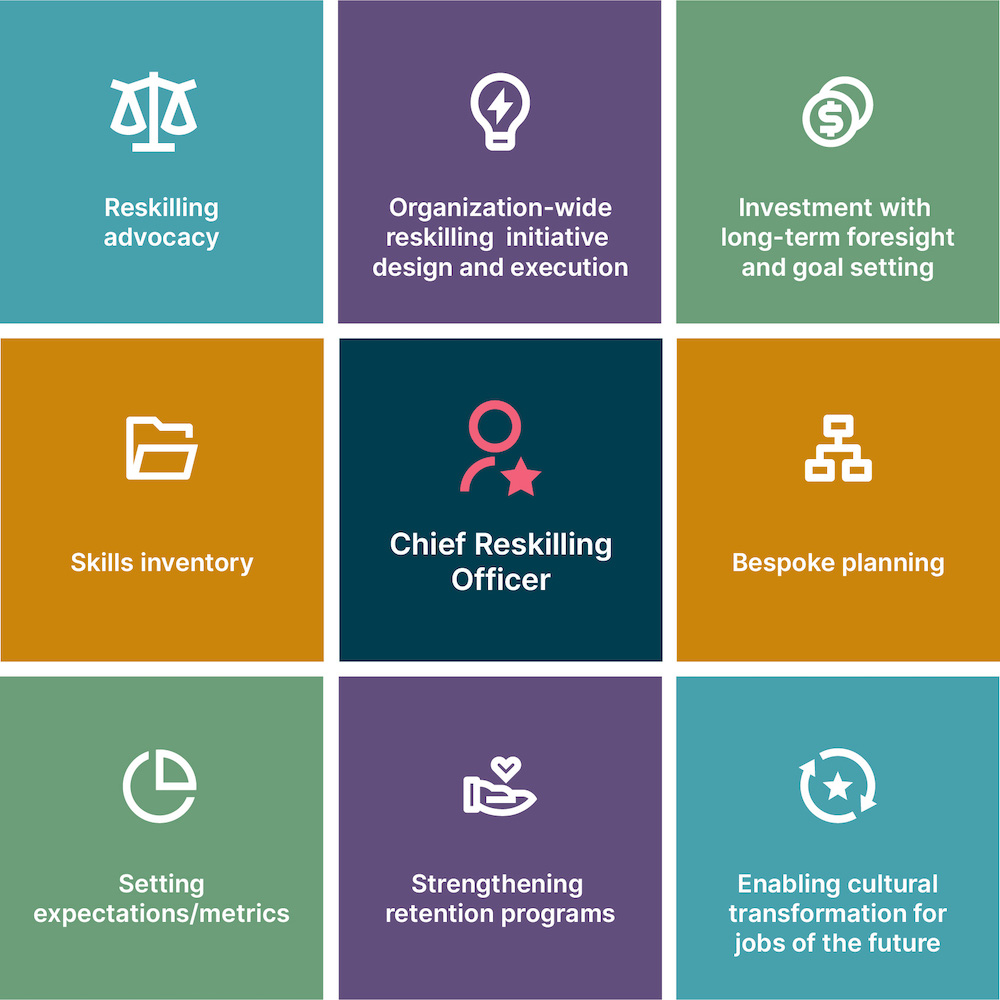

Disclaimer: The statements and opinions expressed in this article are those of the author(s) and do not necessarily reflect the positions of Thoughtworks.










